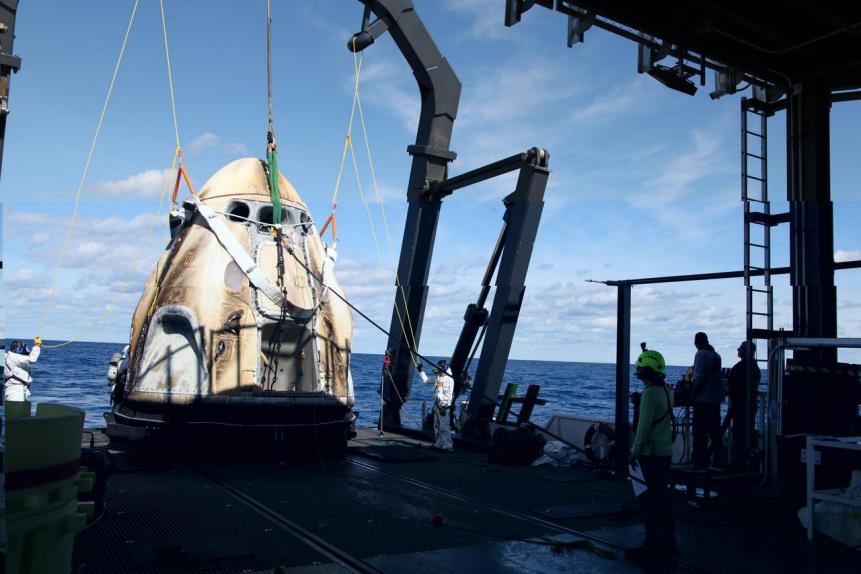
SpaceX/NASA
What to Know About the Splashdown to Earth

A spacecraft full of humans is going to crash on the Earth and that’s okay. What goes up, must come down. At least, that’s what the saying is. And in the case of the historic NASA/SpaceX crewed mission to the International Space Station, it’s true.
What goes up, must come down. At least, that’s what the saying is. And in the case of the historic NASA/SpaceX crewed mission to the International Space Station, it’s true.
Last May, astronauts Doug Hurley and Bob Behnken made history when they became the first people to launch into space on a privately developed, reusable rocket. And since they went up, it’s now time to come down.
What Will Happen on August 2nd?
After enjoying two months of zero-g acrobatics in orbit around the Earth (not to mention the spectacular views), the dynamic duo are scheduled to begin the splashdown procedure on August 2nd.
The entire process – from the undocking of their spacecraft to the final unhatching – will last anywhere between a brisk 6 and a grueling 30 hours. The uncertainty is due to the fact that the Earth is full of weather, especially off the coast of Florida, where the landing will take place. So if the primary landing zones become occupied with, say, a monstrous hurricane, they’ll have to wait for the orbits to line up just right to splashdown at one of the backup sites.

NASA/Cory Huston
Watch SPACE LAUNCH LIVE: SPLASHDOWN on Discovery and Science Channel on August 2nd starting at 1PM ET.
Right, a Splashdown
The capsule (which, by the way, is properly called the SpaceX Crew Dragon Endeavor, in honor of the space shuttle that both Doug and Bob first flew on), will make a wet landing when it finally returns to Earth.

SpaceX/NASA
Why? Because at the moment of undocking from the space station, Endeavor will weight 27,600 pounds, and will be traveling at approximately 17,500 miles per hour. And in order to safely return Doug and Bob back home, Endeavor has to…well, not be either of those.
The Return
The return will begin with a series of short rocket bursts to make sure the spacecraft is safely positioned away from the ISS. Then after a few hours of waiting for the spacecraft’s orbit to sync up with the splashdown zone correctly, a single six-minute burn will begin the descent procedure. Just before reentry into our atmosphere, the Crew Dragon will release its trunk, a 6-thousand-pound box of rocketry not needed for landing. Without the trunk, the spacecraft will be committed: either safely land on the Earth, or die trying.
And then the atmosphere comes. Using our own layer of air to slow the spacecraft, Crew Dragon will experience temperatures in excess of 3,500 degrees Fahrenheit (don’t worry, Doug and Bob will be safely cocooned inside). At an altitude of 18,000 feet, when Endeavor is traveling a mere 350 miles per hour, two drogue parachutes will deploy, followed by another set of 4 parachutes once the craft descends to 6,000 feet.
Welcome Back!
If all goes well, the waters of either the Atlantic Ocean of the Gulf of Mexico will provide the final cushion for landing. Then a ship full of NASA and SpaceX engineers, medical personnel, and retrieval experts will hoist the Endeavor onboard, crack open the spacecraft like a multi-ton clamshell, and welcome Doug and Bob back to Earth (and probably ask for autographs).
Watch SPACE LAUNCH LIVE: SPLASHDOWN on TV or stream it live on Discovery GO. Follow Discovery on Facebook, Instagram, TikTok and Twitter for the latest updates and join the conversation on social media by using the hashtag #Splashdown.



















